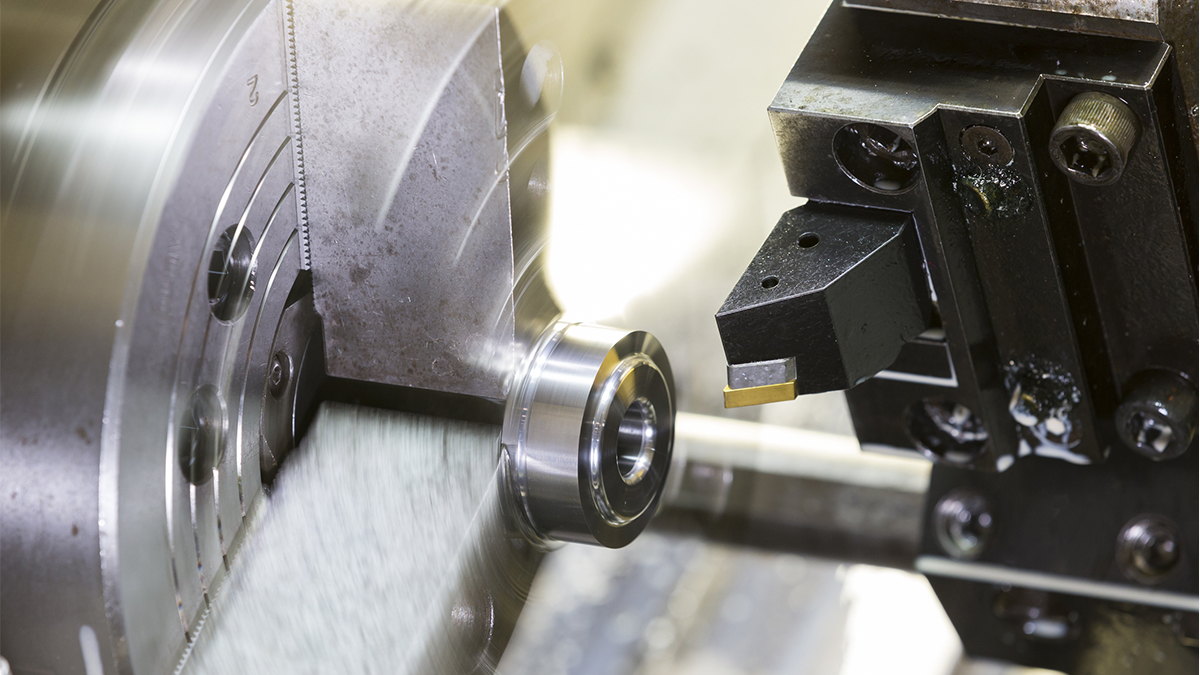In machining, boring is the process of enlarging a hole that has already been drilled by means of a single-point cutting tool, such as in boring a gun barrel or an engine cylinder.
Boring is used to achieve greater accuracy of the diameter of a hole, and can be used to cut a tapered hole. Boring can be viewed as the internal-diameter counterpart to turning, which cuts external diameters.
Boring machine, device for producing smooth and accurate holes in a workpiece by enlarging existing holes with a bore, which may bear a single cutting tip of steel, cemented carbide, or diamond or may be a small grinding wheel. Single-point tools, gripped in a boring head attached to a rotating spindle, are moved circularly against the sides of the existing holes. The diameter of the hole swept out by the tool is controlled by adjustment of the boring head.
Grinding-wheel cutters have a planetary motion, rotating rapidly about their own axes, which in turn slowly rotate with the boring head about the spindle axis; the hole diameter is controlled by adjusting the distance between the wheel axis and the spindle axis. The spindles on boring machines may rotate about vertical or horizontal axes.
Boring machines used in toolmaking shops have one vertical spindle and a work-holding table that can be moved horizontally in two directions perpendicular to each other so that holes can be accurately spaced. On some machines the spacing error is less than 0.002 percent. In mass-production plants, special boring machines with multiple spindles are common.
Boring Machine Type
There are various types of boring. The boring bar may be supported on both ends (which only works if the existing hole is a through hole), or it may be supported at one end (which works for both, through holes and blind holes). Lineboring (line boring, line-boring) implies the former. Backboring (back boring, back-boring) is the process of reaching through an existing hole and then boring on the "back" side of the workpiece (relative to the machine headstock).
Because of the limitations on tooling design imposed by the fact that the workpiece mostly surrounds the tool, boring is inherently somewhat more challenging than turning, in terms of decreased toolholding rigidity, increased clearance angle requirements (limiting the amount of support that can be given to the cutting edge), and difficulty of inspection of the resulting surface (size, form, surface roughness). These are the reasons why boring is viewed as an area of machining practice in its own right, separate from turning, with its own tips, tricks, challenges, and body of expertise, despite the fact that they are in some ways identical.
Machine tools used
The boring process can be executed on various machine tools, including
- general-purpose or universal machines, such as lathes (/turning centers) or milling machines (/machining centers)
- machines designed to specialize in boring as a primary function, such as jig borers and boring machines or boring mills, which include vertical boring mills (workpiece rotates around a vertical axis while boring bar/head moves linearly; essentially a vertical lathe) and horizontal boring mills (workpiece sits on a table while the boring bar rotates around a horizontal axis; essentially a specialized horizontal milling machine).
Tunnel boring machine
A tunnel boring machine (TBM), also known as a "mole", is a machine used to excavate tunnels with a circular cross section through a variety of soil and rock strata. They may also be used for microtunneling. They can be designed to bore through anything from hard rock to sand. Tunnel diameters can range from one metre (3.3 ft) (done with micro-TBMs) to 17.6 metres (58 ft) to date. Tunnels of less than a metre or so in diameter are typically done using trenchless construction methods or horizontal directional drilling rather than TBMs. TBMs can also be designed to excavate non-circular tunnels, including u-shaped or horseshoe and square or rectangular tunnels.
Tunnel boring machines are used as an alternative to drilling and blasting (D&B) methods in rock and conventional "hand mining" in soil. TBMs have the advantages of limiting the disturbance to the surrounding ground and producing a smooth tunnel wall. This significantly reduces the cost of lining the tunnel, and makes them suitable to use in heavily urbanized areas. The major disadvantage is the upfront cost. TBMs are expensive to construct, and can be difficult to transport. The longer the tunnel, the less the relative cost of tunnel boring machines versus drill and blast methods. This is because tunneling with TBMs is much more efficient and results in shortened completion times, assuming they operate successfully. Drilling and blasting however remains the preferred method when working through heavily fractured and sheared rock layers.







.png)






